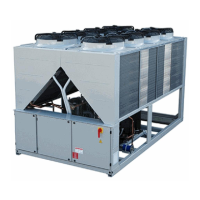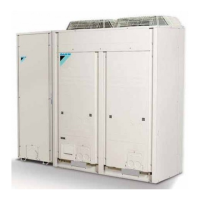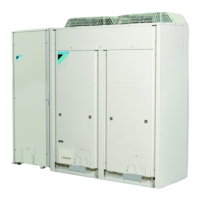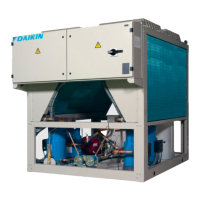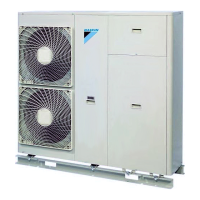D-EIMAC01207-15EN - 15/22
7. Unless specifically agreed at the time of order, the
flow of water of the evaporator must never exceed
120% or be below 80% of the nominal capacity and in
any case within the limits shown in this manual.
Mandatory periodical checks and start-up of Groups
(units)
These Groups (units) are included in category II and III
of the classification established by European Directive
PED 97/23/EC.
For Groups belonging to this category, various national
laws call for a periodical control by an authorised
organisation. We recommend you contact such an
organisation to also request authorisation for start-up.
Table 5 - Periodic maintenance programme
Annually /
Seasonally
(Note 2)
Collecting operational data (Note 3)
Visual inspection of machine for any damage and/or loosening
Verification of thermal insulation integrity
Clean and paint where necessary (Note 4)
Check flow switch operation
Check wear on contacts – Replace if necessary
Check the that all electrical terminals are tight – Tighten if necessary
Clean the inside of the electrical panel (Note 4)
Clean the ventilation filters on the electrical panel (Note 4)
Visual inspection of components for any signs of overheating
Check operation of compressor and electrical resistance
Use a Megger to test the insulation of the compressor motor
Carry out a refrigerant leak test
Check the refrigerant level through the inspection port – level full
Check for a load loss in filter dryer (where present)
Analyse the compressor vibrations
Check the safety valve (Note 5)
Check that the heat exchangers are clean (Note 6)
Notes
1) Monthly activities include all weekly ones
2) Annual activities (or start of the season) include all weekly and monthly ones
3) The unit's operating values should be measured on a daily basis for more thorough monitoring
4) If a unit is installed in an "aggressive" environment, this activity should be carried out once a month.
The following are considered "aggressive" environments:
- Environments with a high concentrations of industrial waste gases in the atmosphere:
- Environments near the sea (salty air);
- Environments near the desert with the risk of sandstorms;
- Other aggressive environments.
5) Safety valve
Check that the cap and seal have not been tampered with.
Check that the safety valve outlet has not been accidentally blocked by foreign objects rust or ice.
Check the date of manufacture on the safety valve and replace it as required by current national legislative requirements.
6) Clean the water heat exchangers. Particles and fibres can block heat exchangers. An increase in water flow or a drop
in thermal efficiency indicates that the heat exchangers are blocked.
Clean the air heat exchanger cooling fins. If a unit is installed in an environment where there is a high concentration of
particles in the air, the condenser may need to be cleaned often.
Bleeding refrigerant gas from the safety valve
Do not bleed refrigerant gas from the safety valve at the
installation site.
If necessary, the valve can be fitted with bleed hoses
whose cross section and length comply with national
legislative requirements and European Directives.

